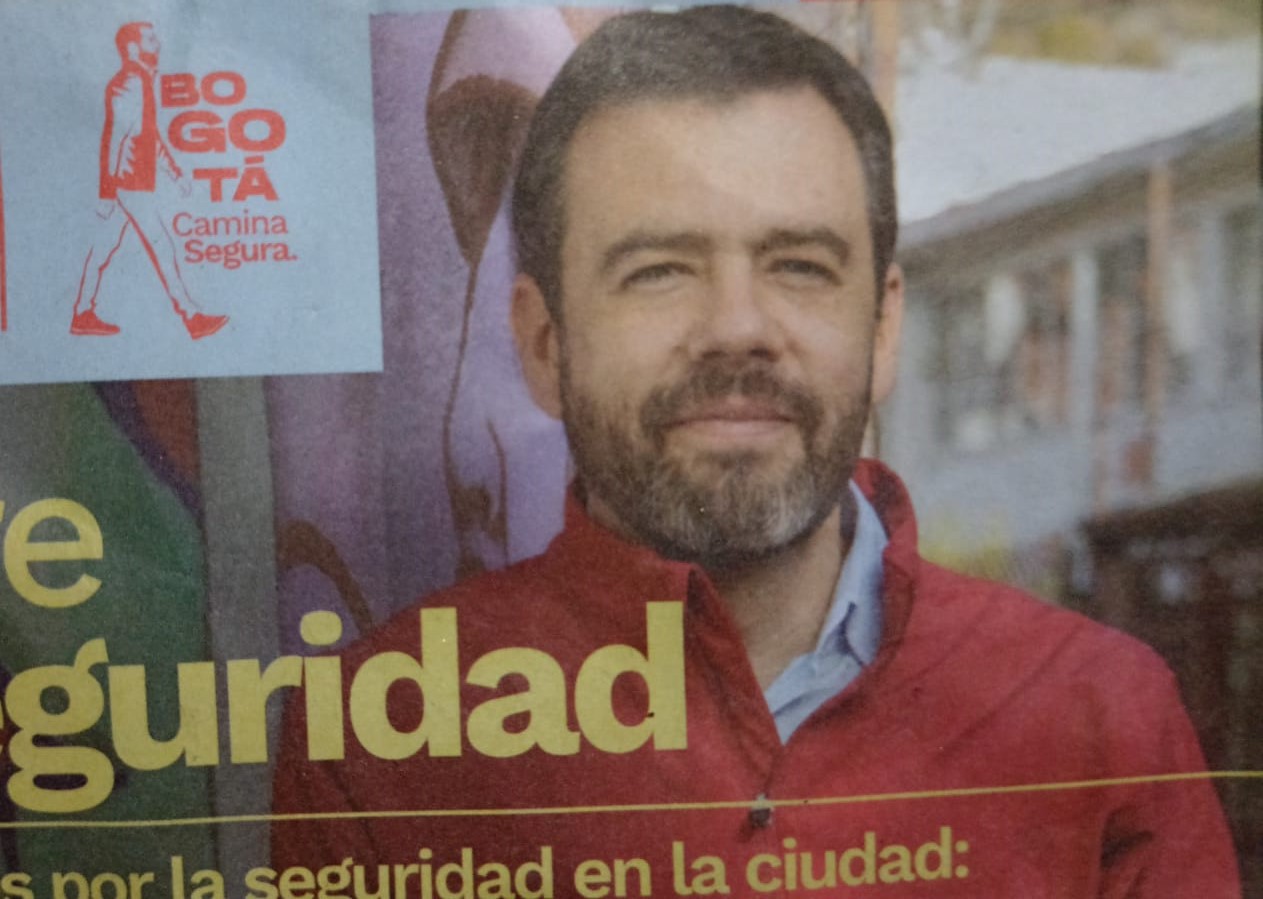
Buenaventura is a port city on the Pacific coast of Colombia and home to nearly 300,000 people. Photo: manuel3000 CC BY-SA 2.0
Laura Sharkey looks at the factors behind an ongoing human rights crisis in the infamous Pacific port city
Last year, the Colombian port town of Buenaventura found itself in the international media spotlight due to its shocking levels of violence. The Economist magazine described the “butchery in Buenaventura” as one of the worst examples of violence in recent Colombian history. A few months later and the international headlines have largely moved on, but the violence in the town remains. We look at the situation as it stands today.
Buenaventura is a port city on the Pacific coast of Colombia and home to nearly 300,000 people. Sixty percent of all Colombian imports and exports pass through its port. It also happens to be one of the most violent cities in Colombia. According to a recent Human Rights Watch report, more than one in six Buenaventura residents have been forced to flee their homes since 2011 to escape death threats, extortion or forced gang recruitment. The situation shows no signs of improving.
To attempt to come to grips with the situation in Buenaventura, it is necessary to understand why an area which is thriving economically would be plagued by such horrific violence. It is true that the city’s port serves as a hub of commercial activity and handles a large percentage of Colombia’s imports and exports, but the reality is that most local residents do not benefit from such activity. Meanwhile, the city has become the scene of a bloody turf war between three different criminal bands who are fighting for control of the lucrative drug smuggling gateway that Buenaventura’s port offers. Though there are smaller gangs at work, the big three are: Las Gaitanistas, La Empresa, and Los Urabeños criminal band — whose ranks are largely made up of former paramilitaries.
Three weeks ago, police found the remains of two dismembered men in a mass grave near the city’s boat docks. The victims were construction workers, who were last seen several days earlier when they left home to go work on a job site in the Comuna 12 neighbourhood — widely known as one of the most dangerous areas of the city.
Victims Butchered in ‘Chop Houses’
It is thought that these two men were the latest victims of a disturbing phenomenon: ‘chop houses’. Chop houses are abandoned houses where people are tortured and dismembered alive by the criminal gangs active in the city. It is unclear what the motivation was behind the brutal murder of the two construction workers, but as one local resident told El Colombiano newspaper: “no one enters, and no one leaves without the permission of these groups.” (Perhaps the men simply found themselves in the wrong place at the wrong time).
The revelation of these so-called ‘chop houses’ both shocked and fascinated the country and the international press when the story broke in March last year. Just how horrific the battle for access to the ports had become came to light when human body parts began to wash up on Buenaventura’s beaches. Despite an investigation into these events — after the UN put pressure on the Government for such an investigation — the killings and the recent discovery of a further eight graves filled with human remains, most located in and around Comuna 12, indicate that this terrifying practice is far from being a thing of the past.
Worryingly, gang killings are not the only form of abuse threatening many of the residents of Buenaventura. Violence specifically targeting women is also a major problem. A United Nations High Commission for Refugees (UNHCR) report released in October 2014 described the increase in sexual violence as the city’s “best-kept secret.” It is a “secret,” the report says, in that most women and girls are reluctant to report sexual violence against them, either for fear of reprisals, mistrust of the authorities or shame.
Last year 38 sexual assaults were reported in Buenaventura between January and November, but in the same period, 30 women were killed in cases linked to sexual abuse or other forms of sexual violence, according to the report. This suggests these crimes are occurring far more frequently than the official statistics indicate.
Reporters with 3FM, a Dutch radio station, were recently in Buenaventura drawing attention to the ‘silent disaster’ of sexual abuse in the area. The journalist Eric Corton reported that “sexual violence is happening there on a very large scale and the victims are particularly vulnerable.”
One of the causes of this, according to a Buenaventura resident quoted in El Pais newspaper, is that “young girls fall in love with a mobile phone, pretty clothes or pesos. They then become the girlfriends of those involved in the armed conflict and later they are forced into prostitution or are sexually abused.”
Years of State Neglect
This is no surprise, as years of neglect by the Colombian government has ensured that living conditions in Buenaventura and the majority of the Afro-Colombian Pacific Coast are exceptionally poor. Despite promises of major investment by Colombian President Juan Manuel Santos, there are concerns that he will not deliver. Ubeimar Delgado, governor of Valle del Cauca Department, explained: “a year and a half ago, President Santos committed $400 million dollars to Buenaventura, but later said these funds were destined for all of the Pacific zone.”

These Afro-Colombian children were displaced from their rural homes and found refugee near the city of Buenaventura. Photo: UNHCR/B.Heger
The extent of neglect is clear in the lack of basic public utilities in the area, specifically lack of access to safe drinking water and a working sewage system. Just last week, demonstrations took place on Buenaventura’s streets. Residents were protesting cuts in the water service, which affected up to 50,000 homes.
While there are two army battalions and 1,000 police in the city, their efforts have been concentrated on fighting drug trafficking as opposed to solving issues related to public safety. The recent discovery of the mass graves has raised questions about whether last year’s military surge in the city has had any lasting impact.
While the past year saw violence drop by a reported 38 percent in Buenaventura, this temporary peace has been shattered by the graves, according to a report by the Colombian analysis website InSight Crime.
Further, local residents have accused many of the army troops stationed in the area of being complicit in gang activity. An official from the Chief Prosecutor’s Office told Foreign Policy magazine, “even with a functioning, ethical police force and a fully-staffed Prosecutor’s Office, the violence in Buenaventura would still be overwhelming.” The implication being made is that Buenaventura is lacking in both of those things.
How does the future look?
Is there any hope that Buenaventura can overcome its multiple demons? Just last week, Rodolfo Palomino, general of Colombia’s National Police Force, announced plans to strengthen the police presence and increase incentives for those who report criminal activity. However, many are concerned that it’s too little, too late.
Critics say that increasing the police presence does not acknowledge the root of the problems. As Human Rights Watch Director for the Americas, Jose Miguel Vivanco, stated recently: “Colombia’s failure to deliver justice in many regions has emboldened armed groups to commit horrific crimes against the civilian population.”
Jorge Restrepo, director of the Colombia-based think tank, the Conflict Analysis Resource Center (CERAC), goes even further: “What we’re seeing in Buenaventura is post-conflict violence. It is the application of forms of violence associated with the political conflict – forced disappearance, displacement and dismemberment – to other types of disputes.”
According to the Colombian NGO, the Ideas for Peace Foundation, at least 24 percent of former paramilitaries have returned to crime since demobilising, and another 56 percent are deemed ‘at risk.’ This means the situation in Buenaventura can be seen as not only a human rights disaster, but also a cautionary tale. The paramilitaries, whose demobilisation was lauded back in 2003, are the same people now running ‘chop houses’ and terrorising the residents of Buenaventura.
The situation serves as a warning of the potential pitfalls of a peace accord with the FARC rebels. In the event of a peace deal, thousands of rank-and-file guerrilla fighters would suddenly find themselves out of a job. As the situation in Buenaventura shows, for many who know nothing but conflict, the draw into Colombia’s violent criminal underworld may be too strong to resist.





